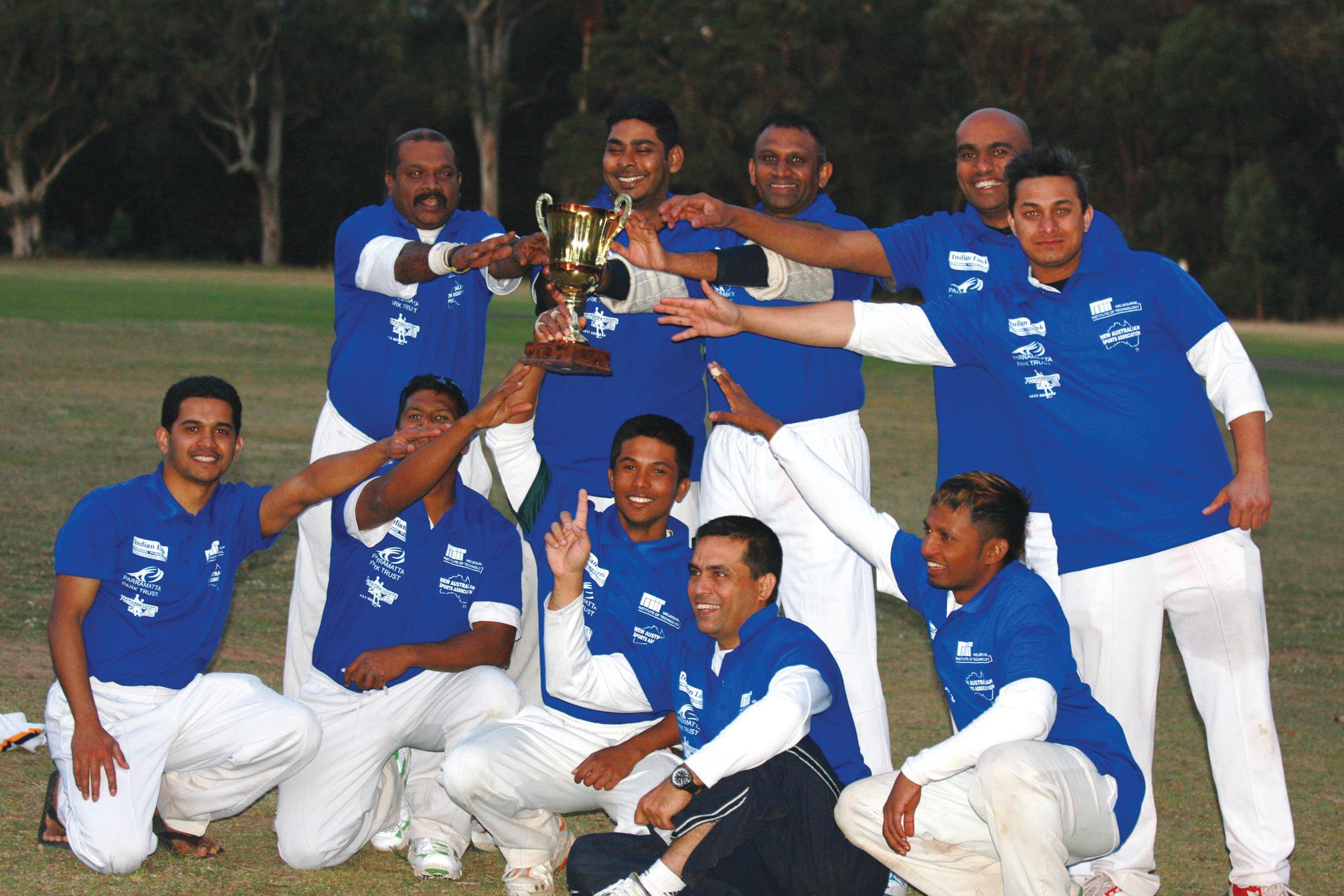
2 minute read
Migrant cricketers make history
from 2009-10 Sydney (1)
by Indian Link
Community cricket recently reached new heights, thanks to an unprecedented effort made by a host of parties, in conjunction with the Indian Australian community. The New Australian Sports Association, Indian Link, Parramatta Park Authorities, Footwork Sports Academy, Melbourne Institute of Technology and Group Colleges of Australia, along with team sponsors set a record for organising a cricket tournament and also broadcasting it live on the internet. The tournament, called the Migrant Cricket World Cup was organised in the cause of peace and harmony among the multicultural Australian community, and was the first of its kind in Australia.
This combined effort was welcomed on different levels as it provided a fertile foundation for social inclusion and interaction, an opportunity for equal competition, while reinvesting in a social cause which is as popular as the game. The cricket event was open to all, irrespective of their cultural, social or religious associations, thus helping the multicultural and wider community to promote awareness of cultural diversity and harmony through the medium of sport.
Teams from the Indian sub-continent as well as local businesses have taken on ownership of these teams, similar to what has been witnessed in IPL. The Haryana Bulls became Ryde Automobiles Haryana Bulls; similarly Sydney Deccan Chargers became Hyderabad Travel’s Sydney Deccan Chargers, and so forth.
The 20-week long summer of cricket enjoyed a colourful start with teams such as Ford Pro Vibrant Gujarat, Nandoos Srilankan Lions, Limra (Afganistan), Group College of Australia, Melbourne Institute of Technology’s Red and Yellow teams, Ryde Automobiles Haryana Bulls, Hyderabad Travel’s Sydney Deccan Chargers, Auburn All Stars (Pakistan), Chandigarh, West Ryder’s, Nepal Cricket Association Australia, all challenging each other to be a part of the opener 8A Side Indian Link Cup.
Most of the teams had players of significant representation, for instance, the MIT team had team members who played in the Ranji trophy for Gujarat in India. Ryde Automobiles Haryana Bulls also had players with state representation here in Australia and India, and Nepal’s team was boosted with two Nepalese internationals in their camp. Group College of Australia emerged the winner from group ‘A’ after beating MIT
Yellow and the Nepalese Cricket Association Australia.
Group ‘B’ witnessed Ryde Automobiles Haryana Bulls overcoming the challenge from Ford Pro Vibrant Gujarat and West Ryder’s.
In Group ‘C’, Chandigarh overcame Hyderabad Travels Sydney Deccan Chargers and Auburn All Stars.
Group ‘D’ had a close encounter between the Srilankan Lions, Limra, and MIT Red, with the Srilankan Lions emerging to battle head on with favourites, Ryde Automobiles Haryana Bulls in the semis. In a nail-biting finish, the Srilankan Lions clinched a thrilling victory on the last ball of the game, reaching the target of 78 runs in 7 overs. Srilanka’s Anuk and Gishan played a key role in securing the all-important victory against the much-fancied Haryana Bulls team.
Group College of Australia was the surprise winner, as they overcame the Chandigarh Boys in the semis.
The finals saw the Srilankan Lion challenge the Group Colleges of Australia, using their experience to prevail over Group Colleges of Australia, winning comfortably by reaching the target of 55 runs in the last over of the game, and cruising away with the Cup. Binit from Group Colleges of Australia was adjudged the player of the tournament, for his outstanding performance.
The teams will also compete in the 30/30 GCA-Macquarie Bicentennial commencing from October 4 and the 20/20 MIT Sydney Cup, commencing at the end of November.
The tournaments are widely acknowledged as another window where the community will have an opportunity to participate, as well as have access to a structured cricket event of unprecedented magnitude. They are a form of social service which initiates general interest and helps integrate the new Australian migrant community through sport. The teams will play cricket together, but still call Australia home.
The competition will reach an audience of more than 20,000 on a regular basis, thanks to its alliance with Indian Link Newspaper and Indian Link Radio, and also with other media and government agencies. Keep listening to Indian Link Radio for updates of the tournament.
It should be seen as a social service of general interest and great way of integrating the New Australian Community through the medium of sports.









